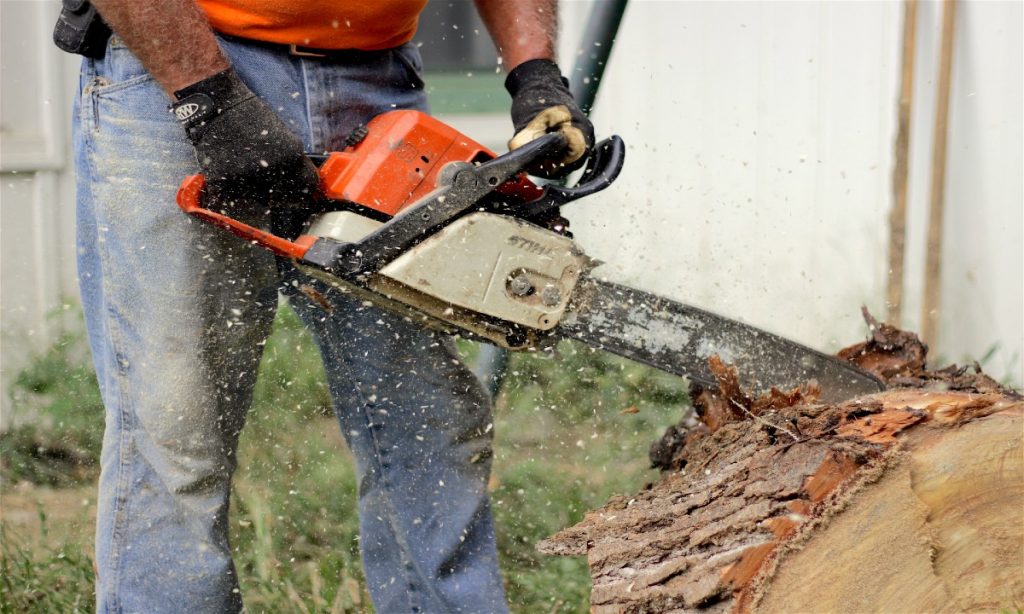How To Know if You Should Sharpen or Get a New Chainsaw

If you own a chainsaw and notice that it is no longer cutting properly, you must consider whether you wish to acquire a new one or sharpen the current chain. A chainsaw chain may last for around five years or even more if used sporadically and still let you finish most of the work. A well-kept chainsaw is nothing less than a dependable buddy. You should try sharpening it, and if it doesn’t work, you should consider replacing it entirely.
HOW OFTEN SHOULD A CHAINSAW CHAIN BE SHARPENED?
There is no defined pattern at which you must sharpen your tool, while how often you should try to sharpen it is highly dependent on its condition as well as how roughly you use it. When you observe that your chainsaw is not cutting as well as it should or as it used to, it’s about time to sharpen it. After each use, always inspect the chain to see if it has any dull edges or if any teeth are missing.
LIFE EXPECTANCY OF THE CHAINSAW
Knowing how long a chainsaw will last is essential since this dictates how often you will need to sharpen it. When cutting wood, keep track of how much your chainsaw is used after each activity, as well as how well it is performing.
Typically, the manufacturer will advise you on how regularly the user should sharpen your chainsaw chain. Nevertheless, the sharpening rate is mainly influenced by how frequently it wears and fractures and how much metal you strip away in each round of sharpening.
WHEN IS IT TIME TO SHARPEN YOUR CHAINSAW CHAIN?
As a general recommendation, sharpen your chain when you find it isn’t cutting as well as previously. Another method is to inspect the sawdust for little bits, which indicates that the chains are becoming dull. A sharp chain is marked by large bits. To prolong the lifespan of your chainsaw chain, you should strive to avoid practices that might dull or harm it. So, when is it time to sharpen the chain?
IF IT STRIKES SOMETHING
When chopping logs or trees, you may come into contact with a rigid material such as frost, stone, or even metal. These are some of the most common causes of chainsaw chain degradation and decreased efficacy. It might also be nails trapped in the wood, causing chainsaw chain damage. As a result, avoid such objects whenever possible, and if you chance to strike any of these items when slashing with your chainsaw, sharpen it with a chain saw sharpener instantaneously.
NOT PROPERLY STORED
Poor chainsaw storage, particularly in a damp or moist environment, can impact how your chainsaw looks and functions. This is due to the fact your chainsaw will corrode and eventually make it incredibly difficult to operate. To eliminate such issues, well lubricate and grease your chainsaw chain regularly.
DULL EDGES
When operating a chainsaw, if you note that it is not functioning correctly, particularly if you have to apply force when cutting a tree or log, it is advisable to sharpen it. Using force or having difficulties cutting indicates that the chain is worn, dull, and needs sharpening.
WAYS TO SHARPEN YOUR CHAINSAW
Use a file
A file guide allows you to file or sharpen the chainsaw chain and ensures that this powerful instrument is sharp enough for the duties ahead. Mount the file on the honing guide ahead of time to ensure precise and consistent outcomes.
Electric chain saw sharpener
These devices are driven by electricity, and you must leave them plugged in or use batteries. While some sharpeners are permanently affixed to a wall, desk, or table, others are movable.
Use a grinder
The use of a grinder is more difficult than that of a file guide. This equipment strips a significant quantity of metal, and if you’re not cautious, you’ll wind up having to replace your chainsaw chain. As it wastes more metal than other sharpeners, this one shortens and most likely decreases the life of your chainsaw.
